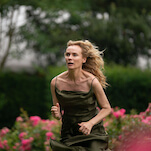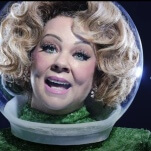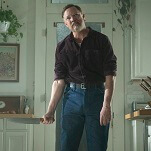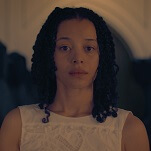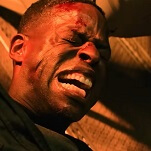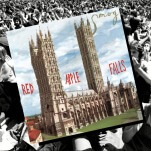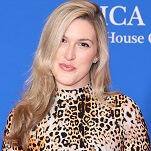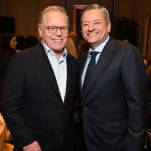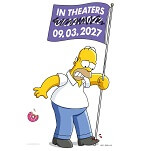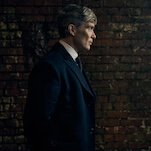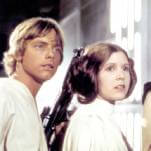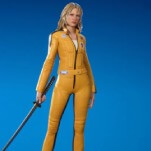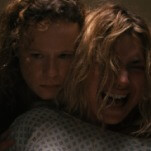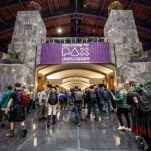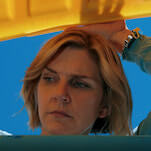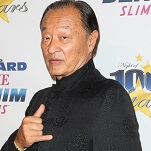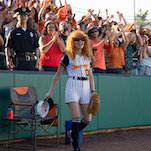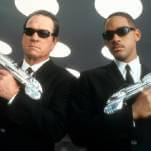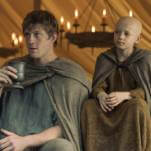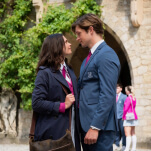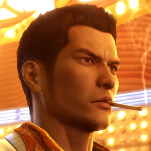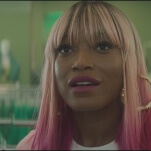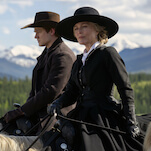Most of us are accomplished watchers of TV and film, so we intuitively understand some of the concepts lurking in dense film-theory tomes. You won’t need them for Internet Film School, The A.V. Club’s column about film and television. In each installment, we explore a basic element of visual composition and analyze examples to understand how the formal properties of film and television manipulate viewers.
A number of you have emailed asking why, if this is “Internet Film School,” I spend so much time talking about television. The historical difference between television and film production has been a matter of money and scale—film sets were more expensive and elaborate, and the quality of the image captured on film stock was higher—as well as talent, as films tended to be made by known directors and feature bankable movie stars.
But as television and film critics have been saying for the better part of the past decade, those differences are largely a thing of the past. George Clooney left the ER and never looked back. Matthew McConaughey is slumming it up on True Detective when he’s not winning Academy Awards. Martin Scorsese is taking time off from being nominated for Oscars to direct episodes of Boardwalk Empire. The point being, historical differences between these competing media is largely an artifact of an older era, but that doesn’t mean differences don’t exist.
Most accounts of “the ascent of television” focus on the factors listed above—the influx of money, the migration of talent—but that’s an oddly incidental way toward a discussion about whether the two are significantly different as media. It would be better to compare the work of someone working in both and try to determine whether the shift in media resulted in a shift in style. Fortunately, a recent film provides an excellent opportunity to undertake just such an operation: Captain America: The Winter Soldier, which was directed by Anthony and Joe Russo of Community fame.
Community is, in one sense, a typical sitcom when it comes to the bounded quality of its world—roughly 90 percent of its scenes occur within the confines of Greendale Community College. When the group ventures off campus, that travel is typically the focus of the episode, be it a trip to a bar Shirley once frequented or a party at Troy and Abed’s apartment. Otherwise, it’s the study room or the cafeteria.
Like most sitcoms, Community has a very strong sense of place, so much so that the college almost functions as a character, much in the way the titular bar on Cheers or Central Perk on Friends did. On a show like Community, that sense of place is enhanced further by the placement of the characters in the scene—Jeff Winger helms the head of the table:
Annie and Shirley occupy the side of the table to Winger’s left:
Abed and Britta, to his right:
Even though—or perhaps, especially because—the entirety of the two previous episodes involved a paintball war that nearly destroyed the school, the fact that they are not merely back in a familiar environment, but that they sit in the expected place within that environment, creates what passes for a reestablishment of normality on the show. Such is the power of place in the world of the sitcom.
This visual logic is very familiar to the Russo brothers—Joe, in fact, directed “A Fistful Of Paintballs” and “For A Few Paintballs More”—but it would be surprising to find it in a film like Winter Soldier, whose budget reportedly topped $170 million. After all, the practical considerations responsible for showrunners to take advantage of previously constructed, cheaply updated sets go out the window when a film’s budget outstrips 99 percent of other films’ final box-office totals. And yet, ignoring the film’s early set pieces—the equivalents of Shirley’s bar or Troy and Abed’s apartment—the entire film could be said to be as much about S.H.I.E.L.D.’s headquarters, the Triskelion, as any episode of Community is about Greendale. Of course, there are the obviously common elements:
But just as most episodes of Community focus on making the lowly institution into something grander than it is, so too is Winter Soldier about saving S.H.I.E.L.D. from itself. This is not simply a matter of plot, either. Consider, for example, the elevator on the Triskelion’s outer wall. (There are many other “established places” in the film we could discuss, and I’m more than happy to do so with you in the comments, but for now, I’ll stick with analyzing this one in detail.) The Russo brothers introduce it early in the film, when Steve Rogers and Nick Fury use it to descend into the underground facility housing the Helicarriers:
The Russo brothers use a medium-long shot, cutting Rogers and Fury off at the calves, but they position them on opposite ends of the frame, thereby making the shot look roomy—like a lot more people could fit in that elevator. At this early moment in the film, it is open and airy, with its gigantic window-walls creating an inviting view of Washington, D.C. But it is, of course, still an elevator, a highly confined location in which any appearance of openness amounts to little more than an illusion.
Later in the film, the situation is slightly different, as the Hydra agents embedded in S.H.I.E.L.D. prepare to take down Rogers:
Of all the places to stage this fight, the Russo brothers chose one they previously established, and one which benefits from that earlier work. Instead of the medium-long shot, they opt for a medium one in which Rogers is centered in the screen, occupying the very position that was empty in the previous version of this shot. Moreover, there are more people in the frame, so even though frame-right is empty, the elevator already feels more crowded—and that’s before the Russo brothers have the doors close on Rogers:
When Brock Rumlow turns to talk to Rogers, that sense of claustrophobia is heightened by the fact he addresses him in a crowded medium close-up:
Rumlow’s unfocused head reminds the audience that Rogers is in a tight spot, and after more of Rumlow’s team enter the elevator at the next floor, that spot becomes so tight that Rogers can’t help but see the sweat beading, then streaking down another agent’s forehead:
The extreme close-up on this agent’s face doesn’t merely signal the attention Rogers is paying to it, but the extent to which the breezily open elevator that Rogers rode with Fury has been squeezed. When the camera cuts back to Rogers, after all, only the focus alerts the audience that he’s supposed to be dominating this cluttered frame:
That elevator is no different than the table in Greendale’s study room—it’s a known space, and the Russo brothers take advantage of that knowledge in order to turn what would be just another action sequence into one in which a knowledgeable audience is conflicted about a particular space. It is expansive, as per that first ride with Fury—which only heightens, by contrast, the effect created when Rumlow’s Hydra agents start turning it into a clown car.
And once he’s dealt with the interlopers:
He’s able to do what the cast of Community hasn’t managed to, albeit minus the sixth season and movie—namely, escape:
That he decided to fly without having any wings to spread might not be the brightest idea, but the way in which he vacates that constricted space is nothing short of inspiring because of how much attention the Russos’ paid to establishing it.

